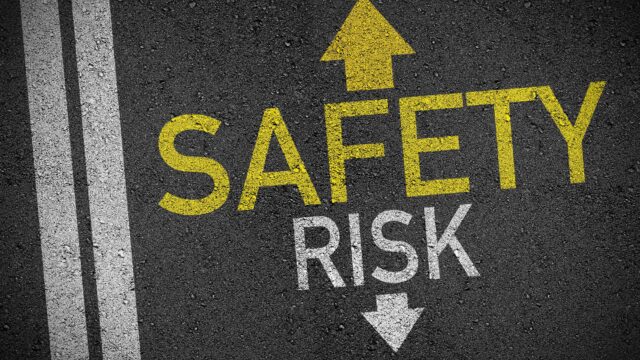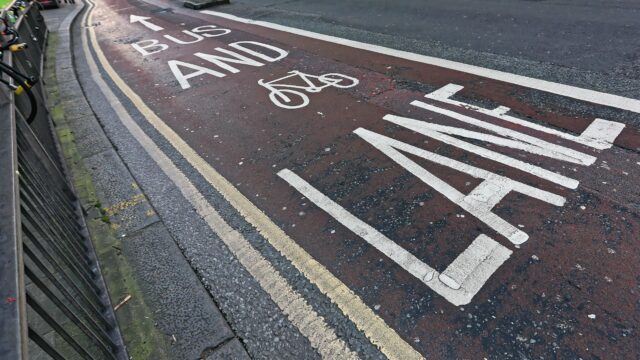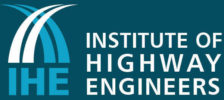MERAKI has extensive experience in casualty reduction type work including collision analysis.
Road safety refers to methods and measures used to prevent road users from being killed or seriously injured. Typical road used include pedestrians, cyclists, motorists, vehicle passengers, horse riders and passengers of on-road public transport.
Road traffic crashed are one of the worlds largest public health and injury prevention problems. According to the WHO more than 1 million people are killed on the worlds roads each year.
In 2019 there were 1,752 reported deaths, there were also 25,945 serious injuries with a total of 153,158 casualties of all severities. There has been an overall reduction in real terms of 4% but still work needs to be done to identify and introduce measures nationally to further reduce these numbers.
Safety Engineering
MERAKI has been undertaking casualty reduction schemes and providing clear safety engineering recommendations for over 30 years. These safety engineering measures have been introduced at both a local and national level for Highways England. As part of our experience we have undertaken many specific areas of safety engineering including:
- Education, Information, Training and Publicity
- Monitoring/Post Opening Performance Evaluation
- Road Safety Policy, Targets, Requirements and Advice, Best Practice Guidance Documents
- Economics and Funding
- Legal Issues in Road Safety
- Risk Assessment
- Safety Inspections
- Road Safety Audit
Casualty Reduction Initiatives
Collision Analysis (AIP)
Road Safety Engineering, along with Accident Investigation and Prevention (AIP) programmes, are major elements in the actions we need to take in order to achieve Casualty Reduction Targets. Some Local Authorities are finding that the detailed work required to assess and implement Local Safety Schemes is becoming quite a challenge, which is where MERAKI can help.
MERAKI have the knowledge and experience to comprehensively support your organisation in reaching its strategic objectives.
We have a highly skilled team of Engineers who have extensive experience within the public sector that have been shown to improve safety.
Our experience
MERAKI has carried out countless traffic and collision studies at site specific locations, along routes and throughout areas in both urban and rural locations in the UK. These studies involved collision analysis, public consultation, scheme design and monitoring studies.
Risk Assessments
Within the industry there are a various type of road safety-based studies, all with different aims and objectives, depending on the scheme in question. Therefore, it is important to distinguish exactly what is meant by these different studies.
Risk Assessment
Formal risk assessment, whilst comparatively common in many professional disciples, has been relatively uncommon in road safety work.
A risk assessment involves the identification of hazards, who is at risk from the hazard, and an evaluation of the risk in terms of how serious the consequences might be if the hazard is realised, together with how often that might happen.
Collision Studies
Collision studies use historical data to define road safety problems on the existing road network, and Road Safety Audit uses this experience to identify hazards within improvement proposals, without necessarily formally evaluating the level of risk.
There are many situations on the existing network where road safety personnel cannot use collision data because it does not exist or is not of a suitable sample size. This often occurs where the proposal is for an activity to change, as opposed to a scheme change.
Examples include:
- school travel assessments
- walking buses
- safer routes
- cycle training
In all of these cases it would be recommended that risk assessments are carried out.
Road Safety Assessments
A Road Safety Assessment is an independent comparative assessment of the road safety implications of different scheme options, or a comparative assessment of risks to different road users within one design option. Road Safety Assessments require, as their base, some understanding and application of risk assessment techniques.
This comparative assessment does provide an opportunity to assess the safety implications of fundamental design principles. The opportunity to make comparative assessments makes Road Safety Assessments an ideal tool for use within the early stages of design as it clearly allows designers to understand the risks and implications of different design options.
The principal task within Road Safety Audit is to identify highway elements with the potential to contribute to injury, together with the road users who could be hurt in those situations. This "hazard identification" process works well in a system where the detail of a scheme has been determined, and where the client wishes to know what the safety consequences are and how to minimise them.
On that basis, for most design stage Road Safety Audits, the Safety Auditor accepts the fundamental principles presented for design and does not seek to redesign schemes. They identify the road safety issues within the design and suggest appropriate measures that will improve road safety.
Comparison of scheme options
Hazard identification works less well in a comparative situation which could include examination of different junction types to provide a safe access to a new development.
Whilst a conventional Road Safety Audit can provide a list of hazards associated with each option, it does not compare the relative risk of each of those hazards.
In this situation a Road Safety Assessment is required.
What is involved in a Safety Assessment?
A Road Safety Assessment is an independent comparative assessment of the road safety implications of different scheme options, or a comparative assessment of risks to different road users within one design option. Road Safety Assessments require some understanding and application of risk assessment techniques.
This comparative assessment does provide an opportunity to assess the safety implications of designs. The opportunity to make comparative assessments makes Road Safety Assessments an ideal tool for use within the early stages of design - particularly within a Transport Assessment for a development proposal where different options may appear to provide the same capacity benefits but could have differing safety related impact.
Our experience
MERAKI has extensive experience in carrying out Safety Assessments on a wide range of schemes for a variety of clients.
MERAKI can carry out a Safety Assessment in isolation or alternatively some clients request for both a Safety Assessment and Road Safety Audit to be carried out.
Workplace Transport Risk Assessments (WTRA)
Health and Safety legislation imposes a general duty on employers to do whatever is 'reasonably practicable' to control work-related risks to their employees and other people who could be affected by their business activities.
A poor safety record can result in disruption to the efficient running of an organisation, a loss of reputation, poor staff morale and an increase in costs.
An employer has a legal duty to ensure the safety of employees working on the site, and that duty of care also extends to other visitors to the site, including contractors and delivery drivers.
Guide to our services for Workplace Transport Safety
MERAKI has extensive experience in carrying out Workplace Transport Risk Assessments (WTRA) to check for compliance with current health and safety legislation and HSE guidance, and to offer practical recommendations for controlling identified risks presented by the movement of traffic around the workplace. We use engineering judgement based on the assessor’s experience in risk assessment and accident investigation. An assessment could include the following elements.
Safe Site - Design
- Traffic routes
- Reasonable adjustments for disabled people
- One-way systems
- Large vehicles
- Segregation of pedestrians
- Pedestrian crossings
- Members of the public
- Visibility
- Speed
- Speed humps and cushions
- Speed limits
- Signs, signals and markings
- Lighting
As an example, MERAKI can assess traffic and pedestrian routes within a workplace to determine whether circulation routes are suitable, speed control is required, visibility is adequate for drivers and pedestrians and whether segregation and specific crossings are required along pedestrian routes.
Our experience
MERAKI have carried out Workplace Transport Risk Assessments on a whole range of different sites across the country where an independent survey as part a commitment to ensuring the health and safety of employees and visitors to the site is essential. These sites have included large distribution depots where vehicles and pedestrians can be in conflict and where clear safe routes for both vehicles and pedestrians is essential.














